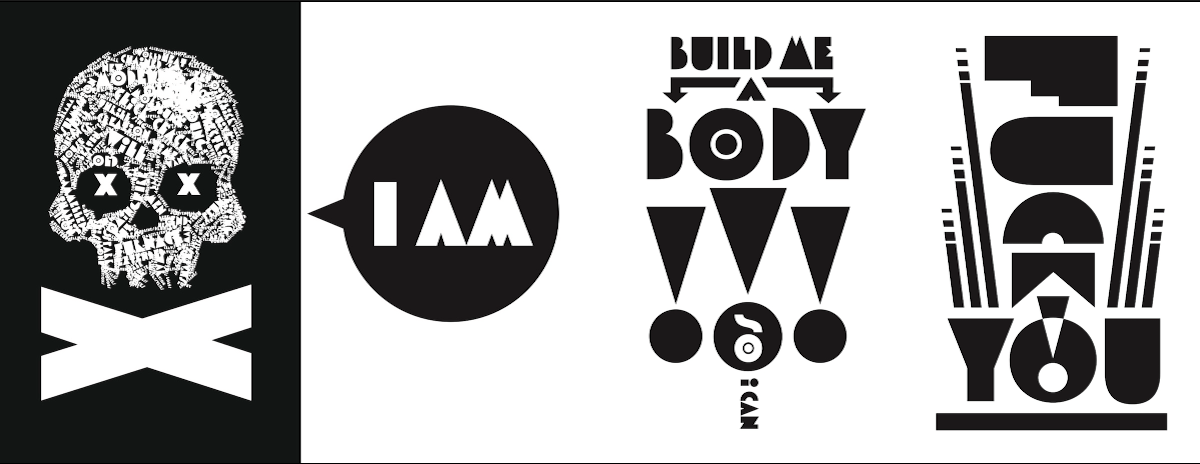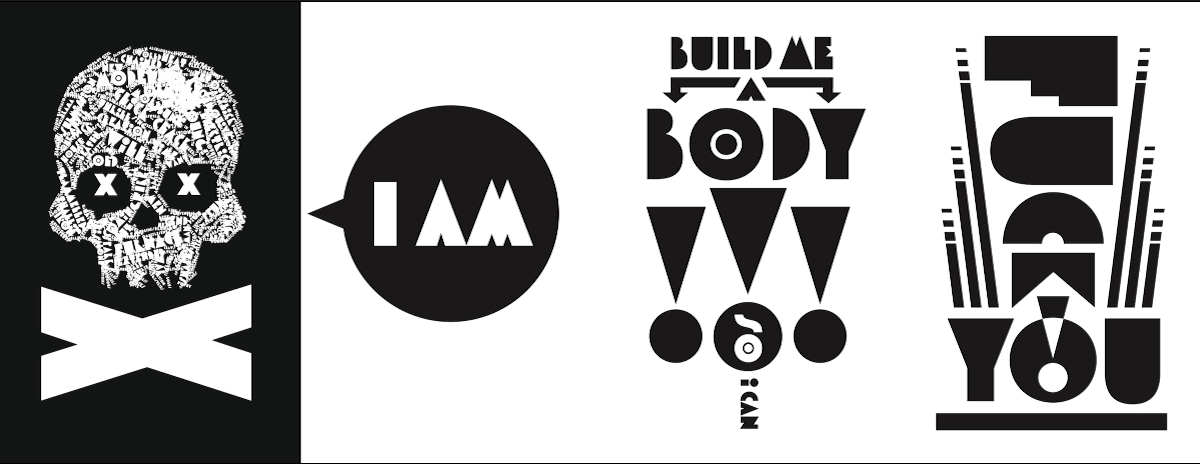At first glance, it may seem that this month’s publication of The XX — the first full-length novel by graphic designer, typographer, and illustrator Rian Hughes — is a sideways step in an otherwise straightforward and wildly successful career. That, much like the mysterious messages that may be memetic lifeforms in The XX, would be a misdirection, however. And although the concept of a graphic designer turning novelist may be unusual, Hughes is far from an everyday designer, and his entire career to date has been spent playing with the audience’s expectations.
Hughes first came to many peoples’ attention as a cartoonist, working as a regular contributor to the seminal Escape anthology in the 1980s, and publishing his first graphic novel, The Science Service — co-written with John Freeman — in 1987 through Belgian publisher Magic Strip; the English language edition wouldn’t follow for another couple of years.
With its effortless retro-futurism in both subject — the manipulation of nostalgia for political purposes, in this case the centenary of 1951’s “Festival of Britain” — and aesthetic, The Science Service was both a stylish calling card for Hughes. In fact, it acted almost as a predictor of the comic project that made his reputation as an illustrator for a generation of comic book fans: Dare: The Future, the 1990 revisionist revival of British science fiction hero Dan Dare, written by Grant Morrison for the short-lived anthology series Revolver. (Dare was so successful that it not only survived the cancellation of Revolver to conclude in sibling anthology Crisis, but it was later collected in multiple editions and reprinted in a U.S. serialization from Fantagraphics Books.)
Dare* again offered Hughes the chance to translate the visual language of futures past into something for contemporary audiences. Like The Science Service, or his own 1983 trading card series, Visions of the Future, the serial’s visual thrills came from subverting iconography and ideas that audiences were already familiar with, and pushing them into contexts and shapes that seemed ill-fitting, if not outright uncomfortable.
As much a commentary on the British Conservative Party’s decade-long rule of the U.K.’s political landscape as it is a revival of Dan Dare, Dare allowed Hughes the chance to play with military and political campaign imagery, as well as science-fiction imagery from the 1950s era when Dare was initially conceived, and bring them into uncomfortable parallel with graphics from the then-present day, underscoring the subtext that’s always seemingly present in both.
This was made concrete in Morrison’s writing, as well as Hughes’ visuals, of course, with the former reading at times like commentary on the latter. “Our marketing people have advised us that we need a strong, unifying symbol for this campaign,” the corrupt Prime Minister Gloria Monday explains at one point, “a personification of the values that we represent. Patriotism. The strength of the individual. An optimistic, enterprising spirit. I’m talking about you, Colonel Dare.” Later, Dare is revealed in a splash page image, wearing his astronaut outfit from his original appearances in the Eagle comic for the first time in the story, placed in front of patterns from the 1950s laid out in a manner reminiscent of the dominant mid-century graphic design styles. “So how do I look?” he asks, Morrison and Hughes both winking at the audience in the visual trickery on show.
Not for nothing were Dare and The Science Service both collected, decades later, in an anthology of Hughes’ comic book work titled Yesterday’s Tomorrows. It’s a fitting descriptor of one of his most prominent aesthetics.
Of course, Hughes is arguably better known both in and outside of comics not for his illustration work or his cartooning, but for his graphic design work. The roots of this career — which have more than paid his way for the past three-plus decades — lie in comic books. And although Hughes was working for advertising agencies by the early 1980s, it was his work for comic book publishers Knockabout Books, Titan Books, and Fleetway — the latter then-owners of 2000 AD and its spin-offs, Crisis and Revolver,both of which Hughes designed logos for — that arguably brought him his first appreciable name recognition.
Around the same late ‘80s, early ‘90s period, Hughes would design the brand identity for the famed comic store chain Forbidden Planet, and again his love of referencing and updating older iconography was on display with clean-cut design centering around a rocketship straight out of mid-20th century sci-fi. (“Yesterday’s Tomorrows,” once again!)
That’s not to suggest that Hughes is some sort of one-trick pony in terms of style, though! After all, he’d hardly have been a successful graphic designer for the past thirty-plus years if he only knew how to do one thing (no matter how well he could do it). With clients including the BBC, Virgin Atlantic, former Spice Girl Geri Halliwell, and Tokyo fashion house Yellow Boots — not to mention a continuing relationship with comic book publishers including DC, Valiant Entertainment, and Marvel — Hughes has demonstrated an eagerness to play against type when the brief demands it, moving from mid-century modernism to graffiti-influenced visuals, or serene, minimalist typography as necessary. While there is certainly a recognizable “Rian Hughes quality” to much of his work, it would be unfair to suggest that it’s easy to identify everything he does on first glance, especially when it comes to the many typefaces and fonts he’s created and sold under the brand name Device.
As Hughes has gotten older, and more established as a designer, it might be expected that his interest in writing might have fallen to the wayside. Thankfully, that’s not the case; even before the release of The XX, he had written picture books for children, essays on design history and his own process, and, in 2010, the amazing Cult-ure: Ideas Can Be Dangerous, a book that is at once a manifesto about the importance of visual design and, also, an explanation of just why everyone from readers to designers need to think more deeply about just what we’re looking at, and why.
It’s a bracing, fascinating read that, as with The Science Service and Dare: The Future, almost predicts and lays the groundwork for some of the more ideologically curious elements of the fictional The XX; it’s also a reminder that, no matter what Hughes’ visual stylings may be for any given project, he is someone who has never casually or lazily relied on what has come before, but instead created and curated messages and meanings with the express intent of evoking new experiences in the viewer, in addition to any nostalgic purpose. If only all designers had Hughes’ thoughtfulness when it came to their work. Indeed, if only all artists did.









